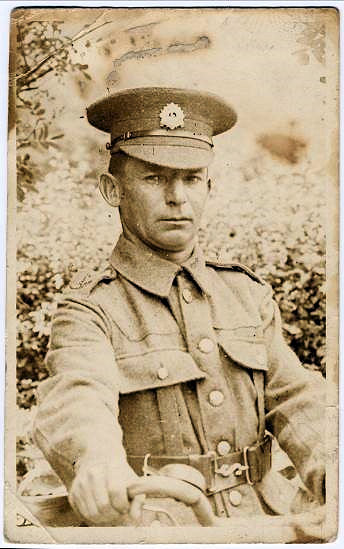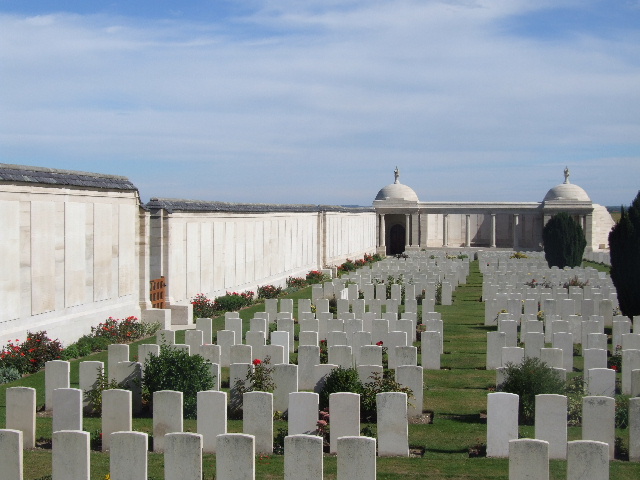Name
Herbert John Clarke
1876
Conflict
First World War
Date of Death / Age
27/09/1915
39
Rank, Service Number & Service Details
Private
3/8664
Bedfordshire Regiment
2nd Bn.
Awards: Service Medals/Honour Awards
British War and Victory medals
Cemetery/Memorial: Name/Reference/Country
LOOS MEMORIAL
Panel 41.
France
Headstone Inscription
NA
UK & Other Memorials
Lilley Village Memorial,
Addenda to the Pirton Village Memorial
Pre War
Wartime Service
Biography
Herbert appears in a report contained in the period scrapbook of newspaper cuttings from the war, handed down through the Marshall family. The cuttings seem to fall into two categories. Those that relate directly to Pirton men and general articles about the local regiments in which they served. So it seems possible that this man had a Pirton connection.
One cutting highlighted concern for Herbert, for although no official information had been sent, letters from Offley and Pirton friends at the Front in Flanders were received in Pirton and they indicated grave fears for his safety. One read ‘Poor Tricky Clark, I am sorry to say he has gone under.’ They also contain information helpful in identifying Herbert. He was thirty-nine. Before the war he worked for Mr Allingham at White Hill Farm and he lived, with his wife and ten children, in a cottage opposite the church in Lilley.
An investigation of Pirton records, and the help of Patti Salter, revealed that Herbert was the son of Alfred George Clark and Emily Day and that he had married Martha Baines in February 1897. For the marriage both Herbert and Martha were recorded as ‘from Pirton’, indicating that both were living in Pirton. Herbert’s parents were from Offley and Herbert was born there, but Martha and her parents were born in Pirton.
By March 1897 a daughter was born and she was baptised Ethel Maud in St Mary’s Church, Pirton. Herbert’s occupation was recorded as a labourer. In January 1898 they were in Pirton and were witnesses at Martha’s sister’s wedding, when she (Ruth Baines) married Charles Cooper. A son Herbert ‘G’ was born to Herbert and Martha around 1899 and then another son, Frederick George was born in July 1900. The elder and younger children were baptised in Pirton and from this information it seemed likely that Herbert and his family were living in Pirton, but in fact the census of 1901 reveals otherwise.
Although Herbert’s name is absent, the family was living in Lower Offley and they now had another child. Despite the elder and younger child being baptised in Pirton, all three children were born in Offley and so the family had been living there since at least February 1897. The newspaper cutting mentioned above tells us that Herbert fought in the Boer War (1899-1902), and this explains his absence from the census. We know that by April 1902 he had returned, because they were once again in Pirton for another happy event, the wedding of another of Martha’s sisters, Kate, to Bertram Chamberlain; Herbert was again one of the witnesses.
The 1911 census records that Herbert was working as a labourer on a local farm, that he and his family were living in Lilley and that they now had eight children, Ethel Maud (b c1897), Herbert G (b c1899), Frederick George (b c1900), Bertha M (b c1903), Emily L (b c1904), Elsie (b c1905), Stanley F (b c1907) and Violet (b 1909). They must have had two more, whose names we do not yet know, because later newspaper reports record ten.
So Herbert’s military career began long before the Great War. We know that he served in the Boer War, had survived without a scratch and that he had served his time. By the start of the Great War in August 1914 he and his wife had a large family. His loyalties must have been split, but he knew where his duty lay and during October 1914 he travelled to Luton to re-enlist and became Private 3/8664 in the 2nd Battalion, Bedfordshire Regiment.
He clearly loved and missed his wife as the newspaper reported that he regularly wrote twice a week from the Front. From incidents he related to his wife we know that not only was he an experienced soldier, but also a brave and compassionate one. On one occasion he went to the rescue of wounded soldiers, helping carry two of them through a river, ‘while up to his armpits in water’. On another occasion, during heavy fighting, he and his comrades were going over the dead strewn German trenches, when one of the wounded Germans appealed for help - Herbert dragged him back to the British lines for attention.
Around the time of his death his Battalion was in Northern France. On September 25th they moved from Noyelles to Vermelles and were preparing for an attack on Vermelles and Cit-St-Elie. This was part of the Battle of Loos. At 11:30am they moved to attack. The Battalion war diary records that they went across no-man’s land and over the first line of German trenches, practically without casualties, but as they began to advance further they came under very heavy rifle fire and suffered severe losses. Even so they managed to reach the second line (or gun trench). It was estimated that between two and three hundred ‘other ranks’ became casualties(*1). When they tried to advance from the gun trench, numbers reduced further, to the point where they had to fall back to it.
Some time later they were strategically withdrawn and began digging a new support trench on the British side of the gun trench. At about midnight the Germans attacked, bombing the gun trench and forcing the remaining men to again withdraw, this time to the new trench. This line held. The men regrouped and charged the Germans and they were so successful that practically all the Germans, then in the gun trench, were killed or taken prisoners.
On September 26th they held the ‘new’ front line until relieved and then withdrew to what was the old German front line, now behind the support trench. They stayed there for September 27th and 28th and at night working parties went out, but no casualties were recorded. On the 29th they relieved Cameron Highlanders in the gun trench, but again there was little action. Then on the 30th the Germans, who were armed with bombs, which were fairly crude hand grenades, attacked on three sides and in the face of ‘bombing with great violence’, they began to lose ground. No losses were recorded in the other ranks, but at least one officer was wounded.
So from this information we know that Herbert died in France in the Battle of Loos, but the exact date is unclear. Officially he was killed in action on September 27th 1915, but his wife Martha received a letter from him on October 6th, dated September 30th and postmarked October 2nd. So the family believed that he died on September 30th and that is the date they had printed on Herbert’s memorial card. Indeed from the information in the war diary it seems unlikely that he died on the 27th and much more likely that he died in the action of the 30th. The fact that he is commemorated on the Loos Memorial means that his body was never found, or at least never identified, which also suggests that he was killed on the 30th and his body left behind on the ground recaptured by the Germans.
The Loos Memorial commemorates 20,582 officers and men, who like Herbert, have no known grave. It is situated about half a mile west of the village of Loos-en-Gohelle. Herbert’s name appears on panel 41 and it also appears on the Lilley Village War Memorial.
*1 Men were Officers or Other Ranks
Additional Information
Information from the book Pride of Pirton.
Acknowledgments
Jo Bayley
The Pride of Pirton book – www.pirton.org.uk/prideofpirton Chris Ryan / Tony French / Jonty Wild



